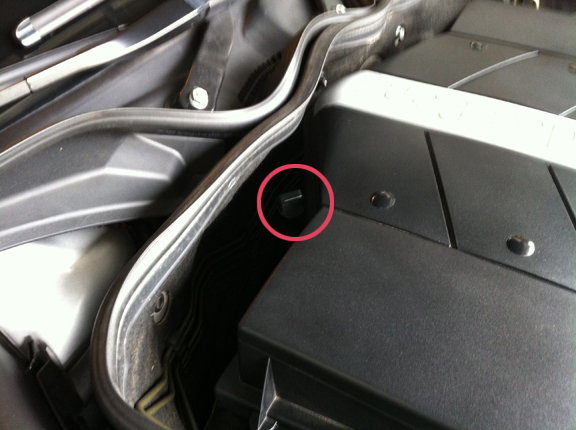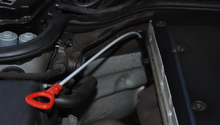Mercedes-Benz E-Class and E-Class AMG: Why Does My Car Jerk Between Gears?
The Mercedes-Benz E-Class was designed to carry its occupants in style and comfort. A transmission jerk certainly diminishes both. Learn how to diagnose potential causes of transmission jerk here.
This article applies to the Mercedes-Benz E-Class and E-Class AMG (2002-2009).
If the transmission fluid level is low, the transmission's hydraulic system can exhibit main line pressure fluctuations. The erratic and unstable change in the main line pressure creates instability in the torque converter's clutch pressure. This pressure instability can be felt and defined by the driver and passenger as a jerk. Line pressure instability can also create instability in the hydraulic pressure commanded to the clutch during a shift event. This main line pressure instability can be felt as a jerk by the driver and the passenger. Transmission fluid changes density with temperature. As the temperature falls, the density falls as well. This means that as the temperature of the fluid falls, the oil volume and oil level falls with it. When the transmission oil level is low, air is introduced into the hydraulic system. The symptoms of air being introduced into the hydraulic system is a distinctive sound and a jerk or hesitation during a shift when selecting a gear with the gear lever; it's called a "garage shift" in the automotive industry.
If the transmission fluid is old or sheared, then many of the properties that contribute to Mercedes-Benz level shift quality are destroyed. With age the transmission fluid additives break down. These additives create the viscosity profile that reduces shudder of the clutches during a shift. Also, anti-foam additives are destroyed and, as a result, foam is created, thus creating a jerk.

Materials Needed
- None
Step 1 – Check for low transmission oil level
On a chilly morning and with a cold engine, start the engine and listen for any odd or different sounds from the powertrain. If you hear a WHOOSHING sound, then most likely air is being drawn into the transmission's hydraulic pump because the oil level is low.
- Check the transmission's fluid level.
- Check the fluid level using the transmission dipstick.

Pro Tips
- Being able to distinguish the distinctive sound of air being introduced into the hydraulic system is a bit of a learned technique. Be patient and pay particular attention to any sounds that are different from when you normally start the engine. Additionally, pay attention to the first "garage shift," or shift from Park to Drive or Reverse. Pay attention to strange or abnormal actions from the powertrain.
- It's also good practice to ensure the transmission's oil level is filled at, or near, the top of the indicator mark on the dipstick. This is especially good practice in cold climates where temperatures are regularly near or below 32 degrees F.
Step 2 – Check for old transmission fluid
Has it been more than 50,000 miles since the transmission fluid has been changed? Most auto manufacturers are coy about detailing the interval of required transmission fluid changes. The act of changing the transmission fluid is actually quite easy to screw up. When done incorrectly, it causes more harm than good. As a result, the powertrain engineers spend a lot of time developing fluids and processes that are defined as "lifetime." It is still good practice to replace transmission fluid every 50,000 miles in your Mercedes-Benz. The new fluid will ensure that the proper friction modifiers are in place to prevent clutch shudder. Clutch shudder is, basically, the clutch vibrating when torque is being applied. Improper fluid or old/sheared fluid is a main cause of clutch shudder.
If you feel a jerky shift and the fluid is old, now is the time to change the fluid. Old fluid has also lost the additive that breaks down micro-air bubbles caused by pumping the fluid to high pressure. These bubbles get into the clutch and cause small fluctuations in pressure, causing a potential "jerky" shift.
- Look at your car's service records. Was there ever a transmission fluid change? If not and 50,000 miles have passed, it's time for new fluid.

Related Discussions
- E320 Jerking During Acceleration -MBWorld.org
- Transmission Jerks When I Put in D or R - MBWorld.org
- Huge Jerk First Second Gear - MBWorld.org
- Transmission Jerking Problem - MBWorld.org
- Transmission Problem - MBWorld.org






